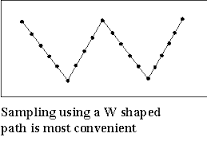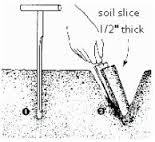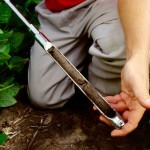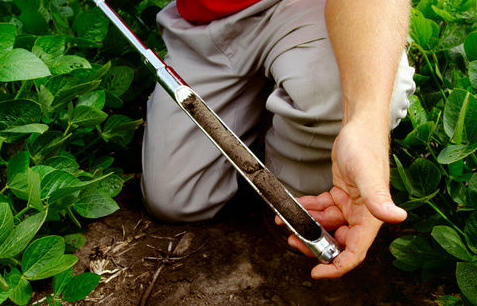We use cookies to make your experience better. To comply with the new e-Privacy directive, we need to ask for your consent to set the cookies. Learn more.
Soil Testing - Taking a Soil Sample
A soil test is a scientific way to measure the fertility of your soil. It will indicate if you need to fix any plant nutrient issues. A soil test analysis shows which nutrients your soil is lacking but also which are already present - knowing this is important as a soil too rich in nutrients can actually hamper growth. This way you can make informed decisions and the result will be cost effective use of fertilisers, lime and trace elements, healthy plants and good environmental management.

Beneficial results of a soil test depend on a good sample. The sample should represent the area it is taken from. A soil sample must be taken at the right time and in the right way. The tools used, area sampled, depth and uniformity of the sample, information provided, and packaging all influence the quality of the sample.
- Take a sample well in advance to give yourself time to understand and act on the results.
- Do not sample when the land is waterlogged or very dry.
- For sampling purposes divide the farm into fields or areas of between 2 – 4ha.
- You will need about 20 cores per area. Ensure that all soil cores are taken to the full 100mm depth.
- Use a soil-sampling probe, auger, spade or shovel. Tools should be either steel, stainless steel or chrome-plated. Do not use brass, bronze, or galvanized tools because they will
 contaminate samples with copper and/or zinc.
contaminate samples with copper and/or zinc. - If a shovel or a spade is used, dig a V-shaped hole to sample depth (10-15 cms), then cut a thin slice as shown. Mix soil cores for each sample in a plastic bucket. Make sure the bucket is completely clean and dry before use.
- Follow a ‘W’ soil sampling pattern to ensure that the sample is representative of the entire field.
- Take separate samples from areas that differ in soil type, previous cropping history, slope, drainage or persistent poor yield.
- Avoid any unusual spots such as old fences, drinking troughs, ditches, dung or urine patches or where organic manure or lime has been heaped or spilled in the past.
- Do not sample a field for P and K until 3 - 6 months after last application of fertilizer. Where lime has been applied allow a time lag of 2 years.
Soil samples can be tested by a number or organisations including:
Fitz Scientific
IAS Laboratories
Southern Scientific Services
If you need any help interpreting your results or want advice on nutrients please ring us at 027 50710. We are very happy to help. Alternatively you can email on [email protected]


